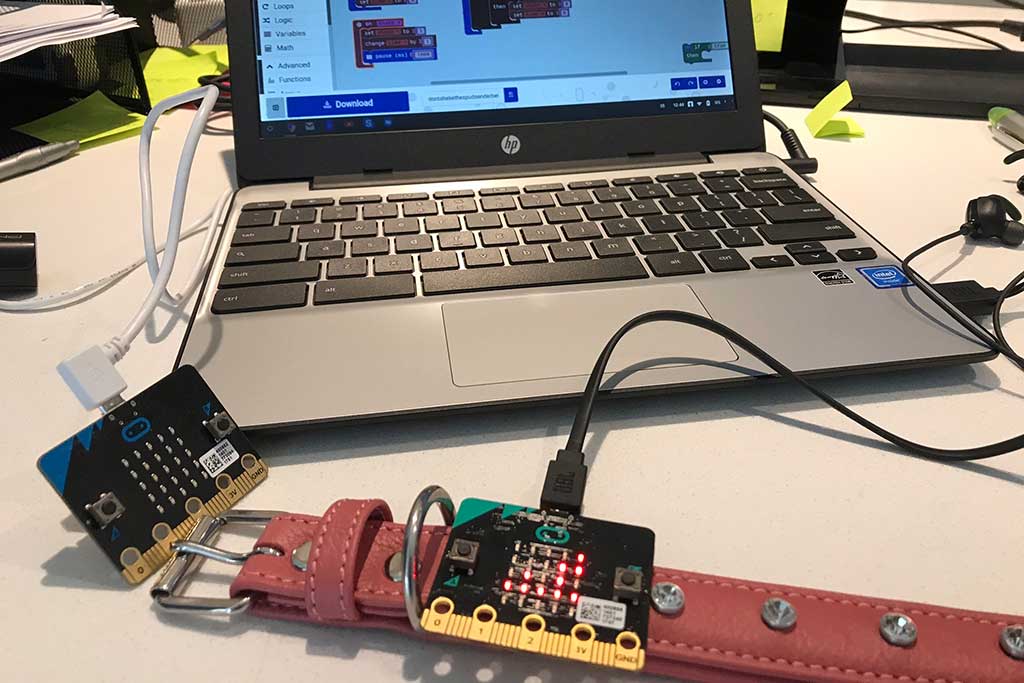Blog post and interview co-written by Gage Ferguson, CA student, and Jenn Ferguson, CA parent and staff member:
As educators, we are often tasked with trying to figure out how we can prepare students for future careers that literally don’t exist yet. As a parent, I feel that this responsibility needs to be distributed amongst everyone who will mentors, influences, and guides our youth navigating the pathways that await them. We need to help them find their spark, what brings them joy, and then connect that to the intersections of these emerging careers so they can create their own future.
There is no doubt that there are specific skills, approaches, and habits of mind that our students need to possess to thrive in a rapidly changing world. To ignite curiosity and explore the crossroads between different subjects and disciplines, we need to allow for opportunities that cross-pollinate at school and at home. Student-led inquiries that are rooted in empath and solve problems relevant and meaningful to them are not confined to a siloed environment.
Do I think we need to prepare students for the jobs that don’t exist yet? I think we need to build a solid foundation for their skills, knowledge, and dispositions. We also must foster accountability, encourage empathy, educate sustainability, and help clear the obstacles out of the way so they can prepare themselves to create those jobs. Their future isn’t in our hands… it’s in theirs… we’re just supporting their little hands – lifting them up – until they are capable of doing it on their own. What does innovation look like at Calgary Academy? I’d like to think it’s when “dream it” becomes “do it” and stories like Gage and Smudge happen everyday.
Gage Ferguson, at age 13, decided to make use of the micro:bit to create a seizure-detecting collar for his beloved bulldog, Smudge. His answers are below.
Why did you decide to make the seizure collar?
The decision to make this came relatively easily after seeing that my dog, Smudge, had been diagnosed with epilepsy. Watching her suffer under the effects of her seizures had scared me half to death, and I knew that I needed to help her, somehow. I’d gotten my head to work devising something to help out. Perhaps a week or so later, I finally landed on a premise I could work off of – namely, a sensor to detect if she’s undergoing a seizure or not.
What was the development process like?
The development process in and of itself was rather simple, as I’d already had the general idea of what I needed to do. The code in and of itself was similarly simple, and to the point. Making use of the micro:bit’s built-in motion sensor, and connecting it to another micro:bit via radio signals was all I needed to create the prototype of the final product. I admittedly ran into a few issues when it came to the radio – a mistake in my inputs caused it to malfunction to an almost impressive degree until I caught my error. Apart from that, however, it was relatively smooth sailing – and practice tests done after the fact proved that it was a success in the event of a theoretical grand-mal seizure.
Are you happy with your prototype? How effective is it?
Yes, and no. The prototype works well for what it’s been coded to do. It senses prolonged motion, and if this motion is too intense and goes on for too long, a radio message is sent to a ‘receiver’ bit that promptly changes the contents of its display to alert the user of the potential seizure. However, this only works if Smudge undergoes a grand mal seizure. Under the effects of a focal seizure, she won’t shake nearly as much, and the seizure will be localized almost entirely on her head. Therefore, I learned it wasn’t nearly as effective as I’d taken it to be, as it won’t be able to detect seizures that nowadays make up the majority of Smudge’s seizures.
What is a micro:bit, anyways? And why did you choose that?
A micro:bit is a small programmable microcontroller device, perhaps a bit smaller than the palm of your hand, that can be coded to perform a wide variety of tasks. Somewhat similar to a VEX robot or the Lego Mindstorms builds, a micro:bit can be programmed, with this code dictating the task it performs. Despite its small size, it houses a large amount of receptors, including light, temperature, and the aforementioned motion sensors.
The decision to use the micro:bit came relatively easy to me, if only due to its small size. Its compact nature allowed me to place it upon her collar, and the motion sensor was the icing on top. Its weight helped matters considerably, given I doubt Smudge would enjoy it very much if I’d placed anything heavier onto her collar.
What’s your future plan with this device?
I have a few goals in mind. The first is to find a way for it to detect focal seizures. Due to focal seizures causing muscles to tense, there may be a way to pitch the idea of an implant to detect this sort of muscle stress by using small sensors to detect this. This way, the final version of this device could in theory be able to detect both kinds of seizures.
The second goal is to find a better way for it to notify its receiver. Going about doing this may require cloud access or internet access. The more likely option would be the former, as you can use a cloud service to connect the sensor itself to a mobile device, allowing much more flexibility concerning notifications.
Gage and Jenn also had the opportunity to join CTV Morning Live Calgary this morning to share this wonderful story.

